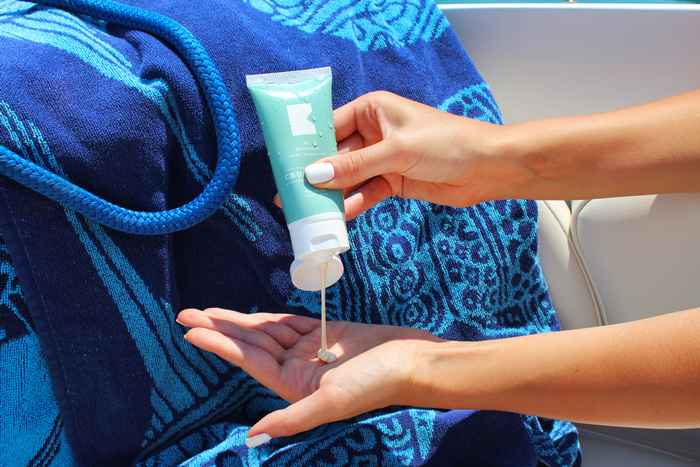Why you should apply sunscreen every two hours
9 July 2021
Why does sunscreen stick?
'Many UV filters, the ingredients in sunscreen that absorb UV light, have a greasy, sticky, oily structure. Therefore, a large amount of UV filters, for higher SPFs, often creates a more 'sticky' texture. Water-soluble filters suffer less from this, and fortunately there is a lot of research being done into new types of UV filters. By adjusting the formulation therefore, more non-sticky sunscreens are coming onto the market.'
Should you throw sunscreen away after a year?
'Sunscreen does not have an unlimited shelf life. On the packaging you will find a symbol of an open jar with a number in it. That number represents the number of months that a product will be usable after opening. UV filters have a certain photostability, which has to do with the stability of sun filters under the influence of (sun) light. A UV filter must therefore be sufficiently photostable. The photostability of all sunscreen products decreases with exposure to sunlight and heat. That's why it is recommended that we still buy a new sunscreen product every year, since we often leave them out in warm places like the beach, garden or patio.'
Does it matter if you buy a cheap or expensive sunscreen?
'There is no difference between the SPF protection of an expensive or cheap sunscreen. They must be equally protective according to legislation. 'Expensive' sunscreens may have a finer texture, for example, because there are often higher R&D costs involved in formulating a finer texture. In addition, more expensive sunscreens may also contain other conditioning ingredients or antioxidants. But the protection is the same.'

Can you make your own sunscreen at home?
'I very strongly advise against this! The formulation of a sunscreen is complex, and even if you use the same ingredients in the same concentration of a particular sunscreen this does not necessarily mean that the same SPF value will be achieved. The formulation process determines the final effect: For example, it is very important to have a homogeneous distribution of UV filters throughout the sunscreen, otherwise it will not work equally well all over the skin. This homogeneity can often only be achieved with certain equipment and not with kitchen mixers.
In addition, there are also many Do-it-yourself recipes that consist of vegetable oils. These oils are not official UV filters and also have too low SPF values. To prevent skin aging and skin cancer, I would not use these myself.'
Do you have any tips on using sunscreen products?
'Yes I do! The big 'problem' with our use of sunscreen is that we don't apply enough and often enough. An SPF claim is based on an amount of 2 mg/cm^2. We often don't use this by a long shot and then the value of the SPF drops.
Make sure that no matter what SPF you use - you can't apply less if it has a higher factor - you apply every two hours and take an amount of half a teaspoon for your face, and a full teaspoon per arm and leg.'
Heleen Kibbelaar is a PhD candidate in the field of complex fluids in the Soft Matter group. In 2017 she investigated the development of sunscreen for people with albinism in Togo, West Africa. She also explains the science behind cosmetics on Instagram, via @sciencemeetscosmetics.